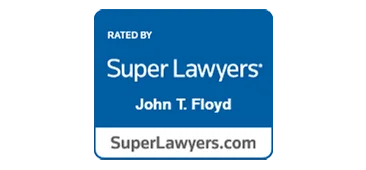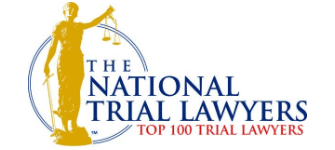Blog
What Is a Brady Violation?

The landmark decision Brady v. Maryland was handed down by the U.S. Supreme Court in 1963. The decision held that, under the Fifth and Fourteenth amendments, a prosecutor has a duty to disclose favorable evidence to defendants upon request, if the evidence is “material” to either guilt or punishment. Failure to comply with this duty has become commonly known as a “Brady violation.”
What Is a Brady Violation?
The Supreme Court in 2006 succinctly answered this question in Youngblood v. West Virginia:
“A Brady violation occurs when the government fails to disclose evidence materially favorable to the accused. This Court has held that the Brady duty to disclose extends to impeachment evidence as well as exculpatory evidence, and Brady suppression occurs when the government fails to turn over even evidence that is ‘known only to police investigator and not to the prosecutor.’ ‘Such evidence is material if “there is a reasonable possibility that had the evidence been disclosed to the defense, the result of the proceeding would have been different”,’ although a ‘showing of materiality does not require demonstration by a preponderance of the evidence that disclosure of the suppressed evidence would have resulted ultimately in the defendant’s acquittal.’ The reversal of a conviction is required upon a ‘showing that the favorable evidence could reasonably be taken to put the whole case in such a different light as to undermine confidence in the verdict.’”
Over the next 50 years, the Supreme Court revisited Brady in twelve major decisions including Youngblood. Those cases are listed below:
- Giles v. Maryland (U.S. 1967): After having been convicted of rape in a Maryland state court, defendants brought a post-conviction proceeding alleging that the prosecution denied them due process of law by suppressing evidence favorable to them and by the knowing use of perjured testimony against them. The presiding judge in the post-conviction proceeding ordered a new trial on the ground that the petitioners’ evidence did not sustain the allegation of knowing use of perjured testimony by the prosecution, but did establish the suppression of evidence concerning the credibility of witnesses and the issue of consent, which constituted a denial of due process. This judgment was reversed by the Court of Appeals of Maryland on the ground that the evidence allegedly suppressed would not materially affect the determination of the petitioners’ guilt or the punishment to be imposed, and that the prosecution’s failure to disclose it was not so prejudicial as to warrant the granting of a new trial on the basis of the denial of due process. Supreme Court vacated the judgment of the Maryland Court of Appeals and remanded the case for further proceedings, even though the court did not agree on an opinion.
- Miller v. Pate (U.S. 1967): Court held that an Illinois death row inmate was entitled to habeas corpus relief where prosecutor knowing misrepresented paint-stained shorts as blood-stained and for failing to disclose the nature of the stains.
- Giglio United States (U.S. 1972): Withheld promise of immunity to con-conspirator upon whose testimony the Government’s case depended required reversal of conviction because “evidence of any understanding or agreement as to a future prosecution would be relevant to [co-conspirator’s] credibility and the jury was entitled to know of it.”
- United States v. Agurs (U.S. 1976): Prosecutor has a due process duty to disclose evidence about a victim’s criminal record, except (1) when the victim’s record was not requested by defense counsel and no inference of perjury by witness created; (2) if the trial court remains convinced of defendant’s guilt after the withheld evidence is reviewed in light of entire trial record; and (3) the trial judge’s firsthand appraisal of the record is thorough and reasonable.
- United States v. Bagley (U.S. 1985): Refined Brady by holding that a prosecutor’s duty to disclose material favorable evidence exists regardless of whether the defendant makes a specific request. The Court said, “favorable evidence” is “material” if there is a reasonable probability that disclosure of the evidence would have produced a different outcome. A “reasonable probability” is “a probability sufficient to undermine confidence in the outcome.”
- Wood v. Bartholomew (U.S. 1995): The failure to disclose inadmissible information does not constitute a Brady violation where there is only “mere speculation” about whether its disclosure would have led to admissible evidence.
- Kyles v. Whitley (U.S. 1995): Accused entitled to a new trial because of the prosecution’s failure to comply with the due process obligation to disclose material evidence favorable to the accused concerning his possible innocence of the crime because the net effect of the withheld evidence raised a reasonable probability that the evidence’s disclosure to competent counsel would have produced a different result. Even if the prosecutor was not personally aware of the evidence, the State is not relieved of its duty to disclose because “the State” includes, in addition to the prosecutor, other lawyers and employees in his office and members of law enforcement.
- Strickler v. Greene (U.S. 1999): Held that a Brady violation occurs when: (1) evidence is favorable to exculpation or impeachment; (2) the evidence is either willfully or inadvertently withheld by the prosecution; and (3) the withholding of the evidence is prejudicial to the defendant.
- United States v. Ruiz (U.S. 2002): Brady does not require disclosure concerning “impeachment information relating to informants or other witnesses” before entering into a binding plea agreement with the defendant.
- Banks v. Dretke (U.S. 2004): Brady violation occurred, and new sentencing hearing ordered to Texas death row inmate, where prosecution suppressed evidence of the informant status of a key state witness whose testimony was key during the punishment phase of the death penalty trial to the prosecution’s claim of future dangerousness.
- Cone v. Bell (U.S. 2009): Observed, without specifically holding, that a prosecutor’s pre-trial obligations to disclose favorable or impeaching evidence, either to guilt or punishment, “may arise more broadly under a prosecutor’s ethical or statutory obligations” than required by the Brady/Bagley post-conviction “materiality” standard of review. The court distinguished the post-conviction setting where the reviewing court must make a constitutional determination of whether the withheld evidence is material to the prosecutor’s pre-trial broader ethical obligations to disclose, which requires a “prudent prosecutor [to] err on the side of transparency, resolving doubtful questions in favor of disclosure.”
American Bar Association Weighs into Brady
The American Bar Association has instructed that a Brady violation has three elements: 1) the information must be favorable to the accused; 2) the information must have been suppressed by the government either willfully or inadvertently; and 3) prejudice must have ensued sufficient to undermine confidence in the verdict.
Favorable, Not Necessarily Admissible
The first element has three components the courts must resolve. First, whether the information was “exculpatory” or “impeachment.” The ABA says there is “no meaningful distinction” between the two. Second, whether the alleged violation involves “Brady material” or “Brady information.” Brady material generally refers to documents and tangible things while Brady information could mean statements by a witness that is not recorded. Because prosecutors sometimes seek to avoid Brady obligations by not memorializing favorable information in writing, the ABA instructs that judges, lawyers, and law enforcement should use the term “Brady information” instead of “Brady material.” C) “Favorable evidence” is not confined to admissible evidence. Brady information can be favorable if it could reasonably lead to admissible evidence.
Evidence Not Disclosed
The second element focuses on the term “suppression”—a term the ABA says is “broad.” The ABA defines the term like this: “If the government had the favorable evidence and did not provide it, it has been ‘suppressed.’ It does not matter why the information was not disclosed.”
Has Confidence in Outcome Been Undermined?
The third element—prejudice undermining the verdict—is the most difficult element to satisfy. The first component of this element, is that “a defendant need not have requested the information to argue that its suppression caused prejudice,” says the ABA. The second component is probably the most significant—that the materiality test does not equate to either a sufficiency of evidence” or a “harmless error” test. The court should not look beyond the suppressed evidence to find there was other sufficient evidence to convict, nor should the court indulge the notion that it was “more likely than not” that the verdict would not have been any different even if the Brady information had been disclosed. The only question the court should decide, as the ABA says, is this: Has “confidence in the outcome” of the trial been undermined? That question can only be answered through a “detailed analysis of the factual record.”
Preservation of Evidence
As a caveat here, it should be noted that the Supreme Court in 1984 with California v. Trombetta held that the government has a limited duty to preserve evidence. Due process requires preservation of evidence “that might be expected to play a significant role in the suspect’s defense.” There are two components to this limited duty to preserve: A) the evidence must “possess an exculpatory value that was apparent before the evidence was destroyed;” and B) the evidence must “be of such a nature that the defendant would be unable to obtain comparable evidence by other reasonably available means.”
Four years later the Supreme Court in Youngblood v. Arizona further clarified the prosecution’s limited duty to preserve by saying that in cases where the evidence is only “potentially” exculpatory, then there is no due process violation “unless a defendant can show bad faith on the part of the police …”
Defense Must Request Discovery/Brady Immediately
That’s why criminal defense attorneys should immediately after representation begins start the discovery process. This is relatively simple in federal courts because in addition to a constitutional duty to disclose Brady information to the defendant, the government is required by Rules 12.1, 16, and 26.2 of the Federal Rules of Criminal Procedure to disclose other information upon request by the defendant.
Federal Criminal Discovery
Rule 16 in pretrial discovery requires the government to disclose the following six types of information:
- The defendant’s oral statements, if any;
- The defendant’s written or recorded statements, if any;
- The defendant’s prior criminal record;
- Certain documents and objects;
- Certain examination and test reports; and
- The content and basis of any expert testimony the government intends to offer during its case-in-chief.
Rule 16 permits inspection and copying of certain documents and objects if these items are 1) material to the defendant’s case, 2) the government intends to use the items in its case-in-chief, or 3) the items are owned by or obtained from the defendant.
Jencks Act
Rule 26.2 deals with the production of witness statements and Jencks Act material. This rule allows that after a government witness has testified on direct examination, the defendant may discover that witness’s pretrial statements under two circumstances: 1) the statements are in the government’s possession, and 2) the statements relate to the subject matter of the witness’s trial testimony.
With respect to Jencks Act statements, the court must determine either the existence or non-existence of such statements only after the defendant has made a timely request that is sufficiently precise in identifying the statements being sought. Rule 26.2 does not entertain requests for Jencks Act statements that are overly broad or that are made before a witness testifies, although the trial court does have the discretion to order production of such statements before the witness testifies.
Discovery is a key pretrial process. Criminal defense attorneys must know, and understand, both the constitutional and statutory duties of the government to disclose. It is best to remember this advice from the National Association of Criminal Defense Lawyers concerning discovery in criminal cases:
“… in criminal cases, when personal liberty and sometimes life itself are at stake, citizens are left to chance regarding the jurisdiction in which they are charged and whether they are allowed access to the evidence in the possession of the prosecution before going to trial. And although there remains the constitutional protection afforded by Brady v. Maryland and its progeny, one need only review reports from organizations such as the Innocence Project and the Northern California Innocence Project to understand that Brady violations remain a systemic problem within the American criminal justice system. A study by the North California Innocence Project of Santa Clara University School of law, found Brady violations to be ‘among the most pervasive forms of prosecutorial misconduct.’”
The take away from this is simple: never take for granted that the prosecutor you are dealing with is playing by the rules.
Take the first step toward protecting your freedom by contacting us now
Testimonials
John T. Floyd is Board Certified in Criminal Law By the Texas Board of Legal Specialization
Request A Confidential Consultation
Fields marked with an * are required
"*" indicates required fields



















